# Touchscreen issues
Contents:
* [Touch not working](#touch-not-working)
* [Touch rotation and matrix](#touch-rotation-and-matrix)
* [Touch calibration](#touch-calibration)
Beware that this document focuses on RaspberryOS but most of it should apply to any other Debian based distros
## Touch not working
If the screen is connected over USB, the cable may cause issues.
For that, please see [this guide](Physical_Install.md#cable-issues).
??? abstract "DSI screens touch not working on RaspberryOS / MainsailOS version Debian 11 Bullseye"
Some DSI screens have issues where touch doesn't work with the default configuration.
The current workaround/temporary fix involves changing the kernel driver module used for these displays.
`sudo nano /boot/config.txt` and change
```sh
dtoverlay=vc4-kms-v3d
```
to
```sh
dtoverlay=vc4-fkms-v3d
```
Close the nano editor using `ctrl`+`x` (exit), then `y` for yes (save).
**Reboot** to apply changes. `sudo reboot`
If that doesn't fix it, you can try commenting these lines out, resulting in:
```sh
# dtoverlay=vc4-kms-v3d
# max_framebuffers=2
```
**Reboot** to apply changes. `sudo reboot`
## Touch rotation and matrix
If the touch works but registers touch input in a different location from the input, then you may need to apply an input transformation matrix.
First you will need your device name. On a terminal, run:
```sh
DISPLAY=:0 xinput
```
Output:
```text
⎡ Virtual core pointer id=2 [master pointer (3)]
⎜ ↳ Virtual core XTEST pointer id=4 [slave pointer (2)]
⎜ ↳ ADS7846 Touchscreen id=6 [slave pointer (2)]
⎣ Virtual core keyboard id=3 [master keyboard (2)]
↳ Virtual core XTEST keyboard id=5 [slave keyboard (3)]
```
In this case the device is the ADS7846 Touchscreen, yours may be different
You can test a change by running:
```sh
DISPLAY=:0 xinput set-prop "<device name>" 'Coordinate Transformation Matrix' <matrix>
```
Where the matrix can be one of the following options:
| Rotation | Matrix |
|-----------------------------------------|-----------------------|
| 0° | `1 0 0 0 1 0 0 0 1` |
| 90° Clockwise | `0 -1 1 1 0 0 0 0 1` |
| 90° Counter-Clockwise | `0 1 0 -1 0 1 0 0 1` |
| 180° (Inverts X and Y) | `-1 0 1 0 -1 1 0 0 1` |
| invert Y | `-1 0 1 1 1 0 0 0 1` |
| invert X | `-1 0 1 0 1 0 0 0 1` |
| expand to twice the size horizontally | `0.5 0 0 0 1 0 0 0 1` |
For more in-depth guidance on using Coordinate Transformation Matrices:
* [Ubuntu wiki InputCoordinateTransformation](https://wiki.ubuntu.com/X/InputCoordinateTransformation)
* [Libinput docs](https://wayland.freedesktop.org/libinput/doc/1.9.0/absolute_axes.html)
To make this **permanent**, modify `/etc/udev/rules.d/51-touchscreen.rules`:
```bash
sudo nano /etc/udev/rules.d/51-touchscreen.rules
```
```sh title="51-touchscreen.rules"
ACTION=="add", ATTRS{name}=="<device name>", ENV{LIBINPUT_CALIBRATION_MATRIX}="<matrix>"
```
Close the nano editor using `ctrl`+`x` (exit), then `y` for yes (save).
!!! example
Test:
```sh
DISPLAY=:0 xinput set-prop "ADS7846 Touchscreen" 'Coordinate Transformation Matrix' -1 0 1 0 -1 1 0 0 1
```
Permanent modification:
```bash
sudo nano /etc/udev/rules.d/51-touchscreen.rules
```
```sh title="51-touchscreen.rules"
ACTION=="add", ATTRS{name}=="ADS7846 Touchscreen", ENV{LIBINPUT_CALIBRATION_MATRIX}="-1 0 1 0 -1 1 0 0 1"
```
Close the nano editor using `ctrl`+`x` (exit), then `y` for yes (save).
!!! example "Alternative"
As an alternative **if the above doesn't work**:
```bash
sudo nano /usr/share/X11/xorg.conf.d/40-libinput.conf
```
```sh title="40-libinput.conf"
Section "InputClass"
Identifier "libinput touchscreen catchall"
MatchIsTouchscreen "on"
MatchDevicePath "/dev/input/event*"
Driver "libinput"
Option "TransformationMatrix" "0 -1 1 1 0 0 0 0 1"
EndSection
```
Close the nano editor using `ctrl`+`x` (exit), then `y` for yes (save).
## Touch calibration
This is optional, and you should only do it if you are having problems.
Download and build xtcal:
```sh
sudo apt-get install libxaw7-dev
cd
git clone https://github.com/KurtJacobson/xtcal
cd xtcal
make
cd ..
```
First you will need your touchscreen device name. On a terminal, run:
```sh
DISPLAY=:0 xinput
```
Output:
```text
⎡ Virtual core pointer id=2 [master pointer (3)]
⎜ ↳ Virtual core XTEST pointer id=4 [slave pointer (2)]
⎜ ↳ ADS7846 Touchscreen id=6 [slave pointer (2)]
⎣ Virtual core keyboard id=3 [master keyboard (2)]
↳ Virtual core XTEST keyboard id=5 [slave keyboard (3)]
```
In this case the device is the ADS7846 Touchscreen, yours may be different
Reset the old calibration: (set the 0° roation matrix: 1 0 0 0 1 0 0 0 1)
```sh
DISPLAY=:0 xinput set-prop "ADS7846 Touchscreen" 'Coordinate Transformation Matrix' 1 0 0 0 1 0 0 0 1
```
Run the calibrator - if it's not fullscreen cancel with `ctrl`+`c`
```sh
DISPLAY=:0 xtcal/xtcal
```
if the previous command was not fullscreen, adjust the geometry to cover the screen, for example:
```sh
DISPLAY=:0 xtcal/xtcal -geometry 480x320
```
!!! important
KlipperScreen or a desktop environment should be on the screen to launch the calibrator
Touch the center of the crosses in order, they should turn white.

### Test the calibration
Copy the output of the calibration and test it, For example:
```sh
DISPLAY=:0 xinput set-prop "ADS7846 Touchscreen" 'Coordinate Transformation Matrix' -0.016267 -0.952804 0.978336 -1.010164 0.065333 0.998316 0 0 1
```
if it's not correct reset the matrix and run xtcal again.
### Make it permanent
Open calibration file:
```sh
sudo nano /usr/share/X11/xorg.conf.d/40-libinput.conf
```
Paste a section like this at the bottom,
replacing the transformation matrix numbers with the numbers of the calibrator output:
```sh title="40-libinput.conf"
Section "InputClass"
Identifier "libinput touchscreen catchall"
MatchIsTouchscreen "on"
MatchDevicePath "/dev/input/event*"
Driver "libinput"
Option "TransformationMatrix" "-0.016267 -0.952804 0.978336 -1.010164 0.065333 0.998316 0 0 1"
EndSection
```
Close the nano editor using `ctrl`+`x` (exit), then `y` for yes (save).
test the persistency of the settings by rebooting
```sh
sudo reboot
```